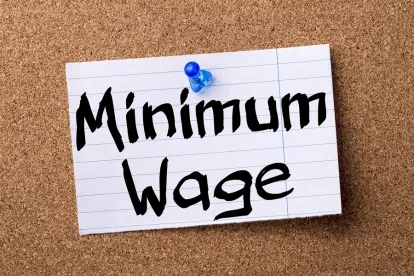Under the Fair Labor Standards Act (“FLSA”), employers can satisfy their minimum wage obligations to tipped employees by paying them a tipped wage of as low as $2.13 per hour, so long as the employees earn enough in tips to make up the difference between the tipped wage and the full minimum wage. (Other conditions apply that are not important here.) Back in 1988, the U.S. Department of Labor’s Wage and Hour Division amended its Field Operations Handbook, the agency’s internal guidance manual for investigators, to include a new requirement the agency sought to apply to restaurants. Under that then-new guidance, when tipped employees spend more than 20% of their working time on tasks that do not specifically generate tips—tasks such as wiping down tables, filling salt and pepper shakers, and rolling silverware into napkins, duties generally referred to in the industry as “side work”—the employer must pay full minimum wage, rather than the lesser tipped wage, for the side work.
This provision of the Handbook flew largely under the radar for years. This was partly because the Department did not publicize the contents of the Handbook, and party because the Department did not bring enforcement actions premised on a violation of this 20% standard. And historically, virtually nobody in the restaurant industry maintained records specifically segregating hours and minutes spent on tip-generating tasks as compared to side work.
In 2007, a federal district court in Missouri issued a ruling in a class action upholding the validity of the 20% standard, and that decision received an enormous amount of attention and publicity. In the years that followed, a wave of class actions against restaurants flooded the courts across the country, all contending that the restaurants owe the tipped employees extra money because of the Department’s 20% standard in the Handbook.
In January of 2009, in the waning days of the George W. Bush Administration, the Department issued an opinion letter rejecting the 20% standard, superseding the Handbook provision, and stating that there is no limit on the amount of time a tipped employee can spend on side work. Six weeks later, however, in March of 2009, the Obama Administration withdrew that opinion letter. In subsequent years, the Department filed several amicus curiae briefs in pending court cases endorsing the 20% standard, and the Department even modified the Handbook provision to make the requirements even more difficult for employers to satisfy.
In late 2017, a divided three-judge panel of the U.S. Court of Appeals for the Ninth Circuit concluded, in nine consolidated appeals presenting the same issue, that the Department’s 20% standard is not consistent with the FLSA and thus was unlawful. A few months later, however, a divided 11-judge en banc panel of the same court reached the opposite conclusion, ruling by an 8-3 vote that the 20% standard is worthy of deference.
In July of 2018, the Restaurant Law Center, represented by Epstein Becker Green, filed a declaratory judgment action against the Department in federal court in Texas challenging the validity of the 20% standard under the FLSA, the Administrative Procedure Act, and the U.S. Constitution. Roughly a month before the employers’ deadline to file a certiorari petition with the Supreme Court regarding the en banc Ninth Circuit ruling, and just days before the government’s response is due in the Texas litigation, the Department reissued the 2009 opinion letter.
This opinion letter, now designated as FLSA2018-27, once again rejects the 20% standard and clarifies that employers may pay a tipped wage when employees engage in side work so long as the side work occurs contemporaneously with, or in close proximity to, the employees’ normal tip-generating activity. This opinion letter should put an end to the many pending cases, including numerous class actions, that depend on the 20% standard.
The overall take-away for employers is that at least under federal law, side work performed during an employee’s shift, in between tip-generating tasks, should present no concern. The same should be true of side work performed at the start or end of an employee’s shift, so long as the side work does not take too long. An employee coming in fifteen or thirty minutes before the restaurant is open to help get the restaurant ready for the day, followed by the remainder of the shift in which the employee generates tips, seems to be consistent with the new opinion letter. Likewise for employees who spend some time at the end of the shift helping to close the restaurant for the day. But employers should use common sense and good judgment, as having tipped employees spend hours and hours performing side work may still give rise to risks. And it remains important to be aware of any state or local law requirements that may differ from federal law.




 />i
/>i

